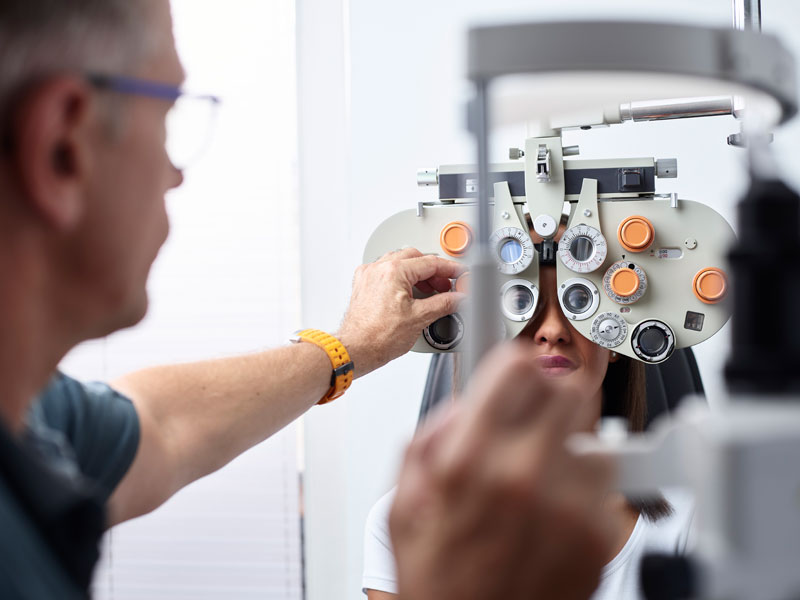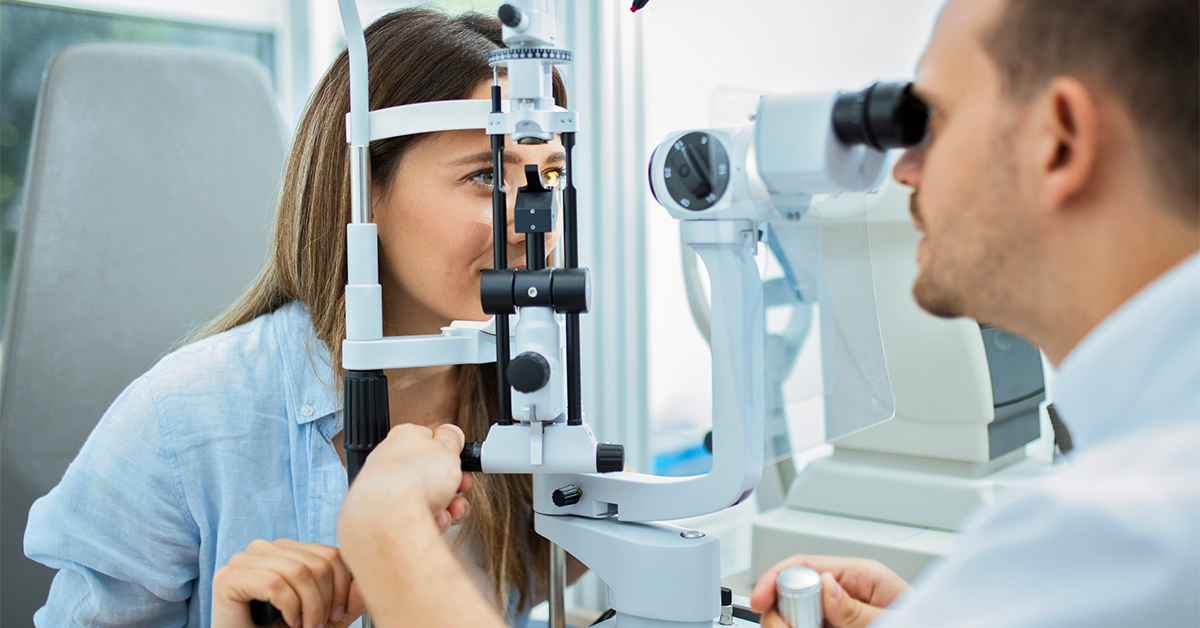Checking Out the most recent Technical Improvements in Optometry and What They Mean for Optometrists
In the ever-evolving field of optometry, current technological innovations are improving just how experts come close to eye care. From the accuracy of Optical Coherence Tomography to the nuanced insights provided by AI-driven diagnostic tools, these technologies are establishing new criteria in individual analysis and therapy. Teleoptometry is poised to redefine availability, making certain that proficiency goes beyond geographical limitations. As these innovations permeate the technique, optometrists are confronted with the challenge of accepting these devices to enhance person outcomes. The concern remains: exactly how will these technical changes redefine the roles and duties within the profession?
Advancements in Diagnostic Devices
Progressing the area of optometry, innovations in diagnostic devices have actually revolutionized the way eye care professionals evaluate and diagnose visual impairments and ocular problems. The previous years has actually observed substantial technical developments, allowing more thorough and exact evaluations. Optical Coherence Tomography (OCT), as an example, provides high-resolution cross-sectional photos of the retina, enabling the very early detection of diseases such as glaucoma and age-related macular degeneration. This non-invasive imaging technique has actually ended up being crucial in modern optometric technique.
One more trick advancement is the introduction of sophisticated corneal topography systems, which map the surface area curvature of the cornea with precision. These devices are specifically helpful for fitting get in touch with lenses and diagnosing corneal conditions. Furthermore, digital retinal imaging has actually transformed typical ophthalmoscopy, providing thorough, scenic sights of the retina that assist in complete visual evaluations.
The advancement of wavefront aberrometry has actually additionally been essential, making it possible for the analysis of refractive errors with unrivaled precision (Optometrist Chino). This innovation helps in tailoring rehabilitative lenses and enhancing surgical results for refractive surgical procedures. Collectively, these analysis improvements encourage optometrists to supply premium individual treatment, ensuring early treatment and tailored treatment strategies, eventually enhancing visual health and wellness results
AI in Patient Management
Building on the structure of sophisticated analysis devices, the consolidation of expert system (AI) in patient management represents a transformative jump for optometry. AI systems are significantly utilized to improve effectiveness, precision, and customization in individual treatment. By assessing substantial quantities of data, AI can determine patterns and forecast potential ocular conditions, enabling eye doctors to tailor interventions better. This capability is crucial in taking care of chronic eye conditions such as glaucoma and diabetic person retinopathy, where early discovery and continuous tracking are key.
Moreover, AI-driven platforms promote streamlined individual interactions and management procedures. Automated scheduling, digital assessments, and personalized follow-up plans not just boost client satisfaction however additionally optimize time administration for experts. These systems can triage clients based upon the necessity of their conditions, guaranteeing that those in essential need get timely focus.
Furthermore, AI improves decision-making by supplying eye doctors with evidence-based suggestions and treatment paths. By incorporating data from digital wellness documents, AI tools provide understandings that inform medical choices, lowering the risk of errors and enhancing person outcomes. As AI remains to progress, its duty in client administration will likely broaden, improving the landscape of optometric treatment.
Breakthroughs in Retinal Imaging
In the world of optometry, retinal imaging has actually observed impressive technological developments that are enhancing analysis capacities and patient treatment. Advancements such as Optical Comprehensibility Tomography (OCT) and fundus digital photography have actually changed just how eye doctors examine the retina and picture. OCT, particularly, offers high-resolution, cross-sectional pictures of the retina, allowing for the comprehensive evaluation of its layers. This capability is important for early discovery and monitoring of problems like glaucoma, diabetic person retinopathy, and age-related macular deterioration.
Improved imaging modalities like OCT angiography are additional refining diagnostic accuracy. This non-invasive method maps blood circulation in the retina, providing crucial insights right into vascular health without the demand for dye injections. In addition, flexible optics innovation is being integrated into retinal imaging systems to fix eye aberrations, supplying unmatched image clearness. Such go to this web-site innovations promote the recognition of min retinal modifications that could symbolize disease progression.
Additionally, innovations in expert system are augmenting retinal imaging by allowing automated evaluation of big datasets. These systems aid optometrists in identifying patterns a sign of pathology, thus improving analysis accuracy and efficiency. Collectively, these advancements are changing retinal imaging right into a cornerstone of contemporary eye care, enhancing end results and expanding healing possibilities.
Teleoptometry's Growing Function
Teleoptometry is significantly coming to be an important element of eye care, driven by developments in digital communication and diagnostic tools. As optometry accepts digital change, teleoptometry assists in remote examinations, permitting eye doctors to expand their solutions beyond typical limits. This is specifically helpful in underserved and rural locations where accessibility to specialized eye treatment is usually minimal. By leveraging high-resolution video clip conferencing and progressed retinal imaging, optometrists can conduct extensive eye exams from afar, guaranteeing timely diagnosis and therapy.
The integration of expert system (AI) additional improves teleoptometry, enabling the evaluation of visual data and assisting in the discovery of find more info eye problems such as glaucoma and diabetic retinopathy. AI-powered formulas can swiftly translate complicated imaging data, offering eye doctors with beneficial understandings that strengthen professional decision-making.
In addition, teleoptometry sustains connection of treatment through seamless integration with electronic health and wellness documents (EHRs), allowing optometrists to preserve extensive person histories. When consulting with different professionals., this ensures that clients get consistent and customized care also.
In spite of these advantages, obstacles stay, consisting of making sure data protection and handling patient assumptions. Teleoptometry stands for a significant stride towards more accessible, efficient, and patient-centered eye care. As innovation develops, its function is poised to broaden additionally.

Future Patterns in Eye Care
A myriad of ingenious patterns is readied to improve the future of eye treatment, driven by technological developments and the evolving requirements of individuals. One significant pattern is the combination of man-made intelligence (AI) in diagnostics, which promises to enhance the accuracy and effectiveness of eye assessments. AI algorithms can evaluate vast quantities of information from retinal images, possibly identifying conditions like diabetic person retinopathy and glaucoma earlier than standard techniques.
Moreover, personalized medication is getting traction in optometry, with hereditary screening notifying customized therapy plans. This approach more information intends to enhance client outcomes by customizing interventions to specific hereditary profiles. Wearable technology, such as wise contact lenses, is additionally coming up, providing real-time surveillance of intraocular stress or glucose degrees, thus giving continuous understandings into eye and systemic wellness.
The adoption of increased truth (AR) and online fact (VR) in training and client education is an additional arising pattern. These modern technologies use immersive experiences that can enhance understanding and abilities both for people and optometrists. As these patterns evolve, optometrists must stay abreast of technical improvements to provide sophisticated care, making sure better client end results and fulfillment in the vibrant landscape of eye care.
Final Thought

Jointly, these diagnostic developments empower optometrists to supply remarkable individual care, guaranteeing early intervention and customized treatment strategies, inevitably enhancing visual wellness results.

As these modern technologies continue to develop, eye doctors have to adapt and integrate them right into practice, eventually maximizing workflow effectiveness and boosting the criterion of eye care delivered to individuals.